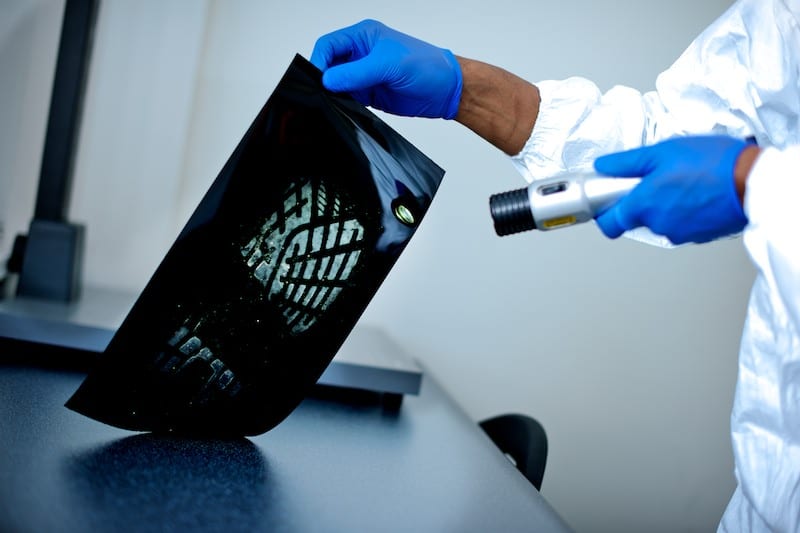Every contact leaves a trace.
‘Locard's Exchange Principle', the underlying premise of modern forensic science, describes a perpetrator's involuntary act of leaving traces behind in a crime scene in exchange for taking some sort of trackable evidence with him. Traces, including blood, saliva, fabric, dirt, prints, and weapons, are meticulously collected by the crime scene investigator (CSI) during an active investigation. The CSI will carefully survey and document the physical condition of the scene while also collecting photographs, sketches, and evidence. They then ensure safe packaging and delivery of the evidence to a laboratory for further analysis by forensic scientists. The results are relayed back to the active case detective (criminal investigator) and/or police officers involved to continue the investigation.

While the duties of CSI end at the crime scene, forensic scientists conduct the necessary experiments to process physical evidence. The various evidence is usually analyzed through specialty units such as latent print unit, firearms unit, and chemistry unit, using tools and techniques (i.e. spectroscopy, digital forensics, PCR, autopsies) to isolate, identify, and relate evidence back to the crime.
Technological and scientific breakthroughs within forensic science have significantly transformed the outcome of many criminal investigations. One such breakthrough was the Uhlenhuth or precipitin test, created by Paul Uhlenhuth in 1901. The test identifies which species a blood sample came from by using a biochemical separation technique. The test was first used by Uhlenhuth to convict Ludwig Tessnow, the Mad Carpenter, for the murder and dismemberment of two boys in Germany. After witnesses mentioned seeing Tessnow the day of the murder with bloodstains on his shirt, Uhlenhuth used his test to confirm that the stains originated from human blood. Tessnow was found guilty and executed for his murders.
Cases similar to Tessnow's are often left cold and unsolved until advancements in forensic science and technology prove useful enough to revisit the investigation years, even decades, later. Recently, the Golden State Killer, a 42-year-long case, was brought to rest with the use of DNA tracing technology and genealogy databases. The same approach is being used to revisit the Zodiac Killer investigation. In addition to more efficient versions of current technology, developing techniques such as microbiome identification and forensic epigenetics can ideally help resolve historically infamous cold cases like that of Jack the Ripper and Mad Butcher of Kingsbury Run.
To learn more about the science and people behind criminal investigations be sure to attend the upcoming Athens Science Café on October 25, 2018! William Edison and Aja Carnell will be sharing their perspectives and expertise about their careers in CSI.
About the author:
 |
Chaitanya Tondepu is a Ph.D. Candidate in the Integrated Life Sciences program at the University of Georgia. Other than science, her favorite pastimes are dancing, hanging out with friends and family, exploring, crafting, and eating delicious food. You can email her at chaitanya.tondepu@uga.edu. More from Chaitanya Tondepu |
About the Author
- athenssciencecafehttps://athensscienceobserver.com/author/athenssciencecafe/April 17, 2020
- athenssciencecafehttps://athensscienceobserver.com/author/athenssciencecafe/April 12, 2020
- athenssciencecafehttps://athensscienceobserver.com/author/athenssciencecafe/April 3, 2020
- athenssciencecafehttps://athensscienceobserver.com/author/athenssciencecafe/March 30, 2020







